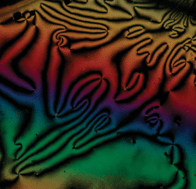The nematic phase of discotic liquid crystals, although rarely observed, has made very significant progress over the past three decades since their discovery. It has made its way from a mere scientific curiosity to application in commodities. The negative birefringence films formed by polymerized nematic discotic liquid crystals have been commercialized as compensation films to enlarge the viewing angle and enhance the contrast ratio of commonly used twisted nematic liquid-crystal displays. High strength and high performance carbon fibers for industrial applications have been obtained from the carbonaceous mesophase and a liquid-crystal display device with wide and symmetrical viewing angle has been demonstrated by using discotic nematic liquid crystals. Discotic films with patterned colours have been obtained from cholesteric lyo-mesophases of discotic liquid crystals. Various molecular architectures have been designed and synthesized to exhibit the discotic nematic phase over a wide range of temperature. This critical review focuses on the synthesis and physical properties of these fascinating materials. It deals with the structure of various nematic phases, different discotic cores exhibiting the nematic phase, novel designing and transition temperature engineering principles, alignment and physical properties, and finally the application of discotic nematic LCs as the active switching component and as optical compensation films for widening the viewing angle and contrast ratio of liquid-crystal display devices (98 references).

You have access to this article
 Please wait while we load your content...
Something went wrong. Try again?
Please wait while we load your content...
Something went wrong. Try again?


 Please wait while we load your content...
Please wait while we load your content...